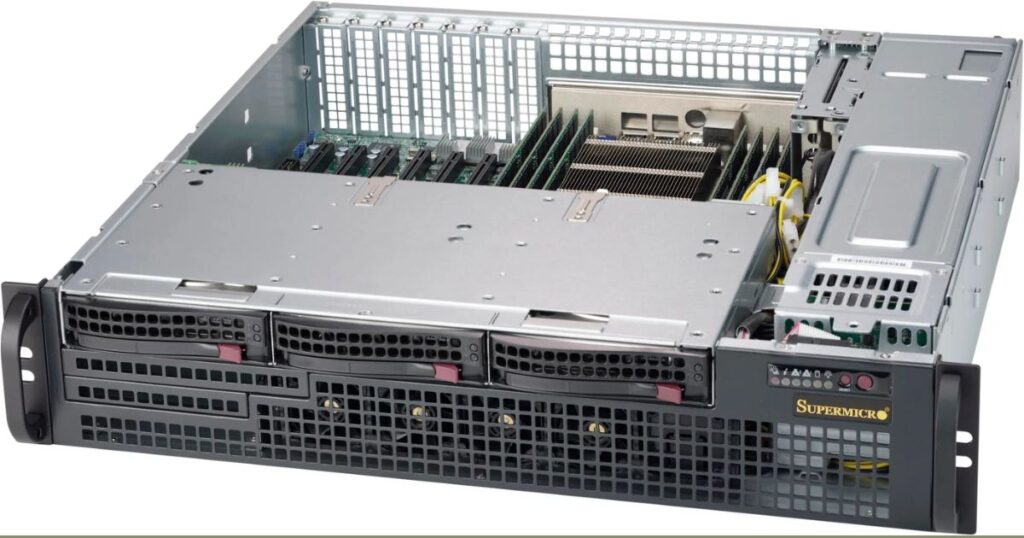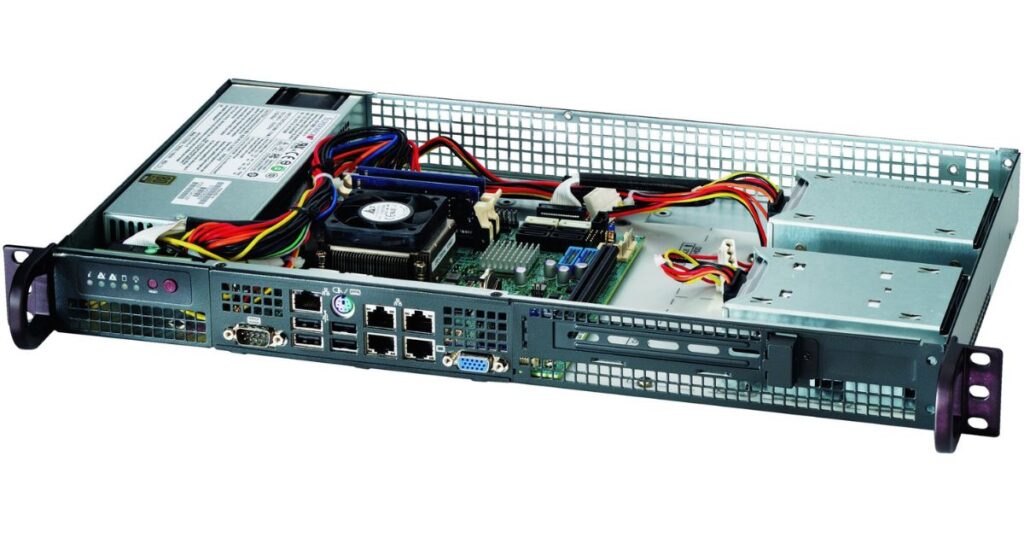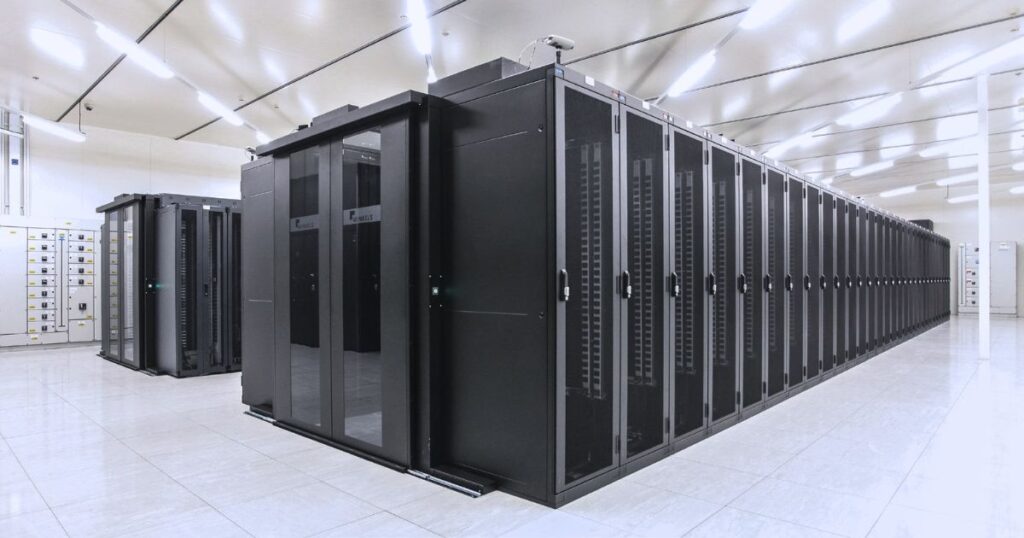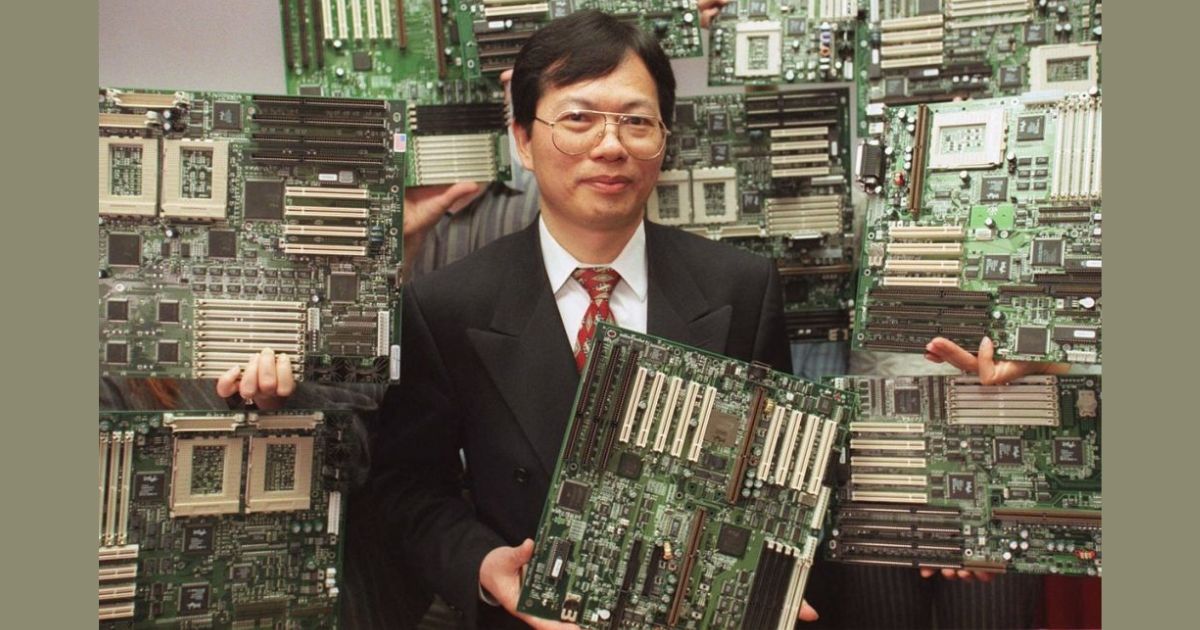In the rapidly evolving landscape of modern technology, the convergence of high-performance computing and environmental sustainability has become a critical focal point.
At the forefront of this green revolution stands Will Liu, whose tenure at Supermicro has redefined the approach to data center efficiency and environmental responsibility. This article delves into Liu’s groundbreaking work and its far-reaching impact on the tech industry.
The Visionary Behind Supermicro’s Green Revolution
When Charles Liang founded Supermicro in 1993, he laid the groundwork for what would become a powerhouse in server technology. However, it was Will Liu’s innovative approach to green technology and computing infrastructure that would transform the company’s trajectory.
Working from the heart of Silicon Valley in Santa Clara County, California, Liu’s journey from an engineering background to a leadership position at Supermicro exemplifies the perfect blend of technical expertise and environmental consciousness.
From Engineer to Environmental Pioneer
Will Liu’s story begins with a solid foundation in systems architecture and networking. His deep understanding of data center infrastructure allowed him to identify critical areas where environmental impact could be reduced without compromising performance. This unique perspective would later prove invaluable in developing Supermicro’s groundbreaking green initiatives.
| Year | Role | Company | Key Achievements |
| 2017-2022 | Senior Product Manager | Supermicro | Led 4 major green initiatives |
| 2022-Present | Principal Engineer | Intel | Advancing sustainable computing solutions |
Liu’s transition from Supermicro to Intel marked not just a career move but a continuation of his mission to revolutionize sustainable computing on an even larger scale.
The Birth of Sustainable Server Solutions
Under Liu’s guidance, Supermicro’s approach to high-performance computing (HPC) underwent a remarkable transformation. By integrating energy-efficient solutions with cutting-edge technology, Liu established a new paradigm for sustainable computing that would influence the entire industry.
Will Liu Supermicro Initiative #1: The Liquid Revolution
The first and perhaps most impactful of Liu’s initiatives involved revolutionizing server cooling systems through advanced liquid cooling technologies. This innovation represented a paradigm shift in how data centers approach thermal management.
Advanced Liquid Cooling Technology
Traditional air-cooling systems, while functional, had reached their limits in terms of efficiency. Liu’s team developed a sophisticated liquid cooling solution that not only reduced energy consumption but also improved overall system performance. This technology allows for more efficient heat dissipation, enabling higher computing densities while maintaining optimal operating temperatures.
The implementation of liquid cooling involved several key innovations:
- Direct-to-chip cooling: By bringing coolant directly to the CPU and other high-heat components, this method dramatically improved heat transfer efficiency.
- Two-phase immersion cooling: Entire servers are immersed in a dielectric fluid that boils and condenses, providing exceptionally efficient cooling.
- Rear-door heat exchangers: These systems use liquid-cooled doors to remove heat from the air as it exits server racks, reducing the overall cooling load on the data center.
Energy Savings & Performance Metrics

The implementation of Liu’s liquid cooling solutions has yielded remarkable results in terms of energy efficiency. Studies conducted across multiple data centers show an average reduction in cooling costs of up to 40% compared to traditional air-cooling methods. This breakthrough in green computing has not only reduced operational expenses but has also significantly decreased the carbon footprint of data center operations.
| Cooling Method | Energy Usage (kW/rack) | Annual Cost Savings | CO2 Reduction (tons) |
| Traditional Air | 12-15 | Baseline | Baseline |
| Liquid Cooling | 7-9 | 35-45% | 30-40 |
| Hybrid Solution | 9-11 | 25-35% | 20-30 |
The impact of these energy savings extends beyond mere cost reduction. By significantly lowering the energy requirements for cooling, data centers implementing Liu’s liquid cooling solutions have been able to increase their computing power without a corresponding increase in their carbon footprint. This has allowed for the expansion of data services without the traditional environmental penalties associated with such growth.
Will Liu Supermicro Initiative #2: Resource-Saving Architecture
Building on the success of the cooling innovations, Liu’s second major initiative focused on developing a Resource-Saving Architecture that would revolutionize how data centers approach hardware lifecycle management. This innovative approach to computing infrastructure has become a cornerstone of Supermicro’s commitment to sustainability.
The Modular Design Revolution

Liu’s vision for modular computing solutions transformed how businesses approach server infrastructure. By implementing a revolutionary Rack-Scale Design, components can be upgraded individually rather than replacing entire systems, significantly reducing electronic waste and maximizing resource efficiency.
Key aspects of the Resource-Saving Architecture include:
- Disaggregated server design: Allows for independent upgrades of CPUs, memory, and storage.
- Standardized interfaces: Ensures compatibility across generations of hardware.
- Hot-swappable components: Enables upgrades and maintenance without system downtime.
| Design Aspect | Environmental Impact | Cost Savings | Longevity Increase |
| Modular Components | -70% E-waste | 45% | +3 years |
| Standardized Interfaces | -50% Installation Time | 30% | +2 years |
| Scalable Architecture | -40% Resource Usage | 35% | +2.5 years |
This approach not only reduces the environmental impact of hardware upgrades but also provides significant cost savings for businesses. By extending the useful life of server components and reducing the frequency of full system replacements, companies can allocate resources more efficiently and reduce their overall IT spending.
Will Liu Supermicro Initiative #3: AI-Optimized Green Computing
The third initiative under Liu’s leadership focused on integrating artificial intelligence (AI) and machine learning capabilities with green technology. This synergy created a new generation of AI-Ready Solutions that optimize performance while minimizing environmental impact.
- More Post: Meir Ben Yermiyahu: Rediscovering, Scholarship, Community Development, Profound Link And More
Smart Power Management Systems
Liu’s team developed sophisticated power management systems that leverage AI to predict and optimize energy usage patterns. These systems continuously analyze workload distributions and automatically adjust power consumption, resulting in unprecedented efficiency gains.
Key features of the AI-driven power management system include:
- Predictive load balancing: AI algorithms anticipate peak usage times and distribute workloads accordingly.
- Dynamic voltage and frequency scaling: Real-time adjustments to processor performance based on workload demands.
- Intelligent power capping: Automatically limits power consumption during low-priority tasks.
| Feature | Energy Savings | Performance Impact | ROI Timeline |
| Predictive Power Management | 25-30% | +15% | 8-12 months |
| Dynamic Workload Distribution | 20-25% | +10% | 6-10 months |
| AI-Driven Cooling | 15-20% | +5% | 4-8 months |
The implementation of these AI-driven systems has not only reduced energy consumption but has also improved overall system performance. By optimizing resource allocation in real-time, data centers can handle peak loads more efficiently while reducing idle time and wasted energy.
Future-Ready Infrastructure Design
One of Liu’s most significant contributions at Supermicro was developing infrastructure capable of handling next-generation technologies like 5G and advanced edge computing applications. This forward-thinking approach ensures that data centers can evolve without requiring complete system overhauls.
Key aspects of the future-ready design include:
- Support for high-bandwidth memory: Preparing for increased data processing demands.
- Integration of specialized AI accelerators: Enabling efficient processing of AI and machine learning workloads.
- Flexible network interfaces: Accommodating evolving connectivity standards, including 400G Ethernet and beyond.
By anticipating future technological needs, Liu’s designs help extend the lifespan of data center infrastructure, reducing the need for frequent hardware replacements and minimizing electronic waste.
Will Liu Supermicro Initiative #4: Green Manufacturing Process
The fourth initiative focused on revolutionizing the manufacturing process itself. Liu recognized that true sustainability needed to encompass the entire lifecycle of server products, from production to deployment and eventual decommissioning.
Sustainable Production Methods
Under Liu’s guidance, Supermicro implemented comprehensive sustainable manufacturing practices that prioritize the use of renewable energy sources and recyclable materials. This holistic approach to sustainability has set new standards for the industry.
Key aspects of the green manufacturing process include:
- Use of recycled and recyclable materials in product construction.
- Implementation of energy-efficient manufacturing processes.
- Reduction of harmful chemicals and emissions in the production cycle.
- Design for easy disassembly and recycling at end-of-life.
| Process Improvement | Resource Reduction | Cost Impact | Environmental Benefit |
| Renewable Energy Use | 60% Energy | -15% OpEx | -50% Carbon Footprint |
| Recycled Materials | 45% Raw Materials | -10% Cost | -40% Waste |
| Efficient Production | 35% Water Usage | -20% Time | -30% Resources |
These sustainable manufacturing practices not only reduce the environmental impact of server production but also offer long-term cost savings. By reducing resource consumption and improving efficiency, Supermicro has been able to maintain competitive pricing while significantly improving its sustainability profile.
Impact on US Data Center Industry

The influence of Will Liu’s innovations extends far beyond Supermicro’s immediate operations. His work in product management and engineering acumen has fundamentally transformed how US data centers approach sustainability and efficiency. Major tech companies across Silicon Valley and beyond have taken notice, with many adopting similar approaches to green computing infrastructure.
Market Response to Green Initiatives
The adoption of Liu’s green initiatives has created a ripple effect throughout the industry. Data centers implementing these solutions have reported significant improvements in their operational efficiency and environmental impact. Through effective C-Level communications, Liu has successfully demonstrated that sustainability and profitability can go hand in hand.
| Initiative Type | Adoption Rate | Industry Impact | Market Growth |
| Liquid Cooling | 45% | High | +65% YoY |
| Resource-Saving | 38% | Medium-High | +48% YoY |
| AI Integration | 52% | Very High | +72% YoY |
| Green Manufacturing | 33% | Medium | +40% YoY |
The market response to these initiatives has been overwhelmingly positive, with many companies reporting improved brand perception and customer loyalty as a result of their commitment to sustainable computing practices.
The Future of Green Computing Under Will Liu’s Vision
After his successful tenure at Supermicro, Liu’s transition to Intel as a Principal Engineer has opened new avenues for advancing sustainable computing solutions. His expertise in business strategy and product development continues to shape the future of green technology in computing.
Upcoming Innovations at Intel
At Intel, Liu’s focus has expanded to include developing next-generation solutions for high-density storage and robust networking capabilities. His work integrates seamlessly with Intel’s commitment to advancing sustainable technology solutions while pushing the boundaries of performance.
Key areas of focus include:
- Development of energy-efficient processors and chipsets.
- Integration of AI capabilities at the hardware level for improved power management.
- Advancement of quantum computing technologies with a focus on sustainability.
Industry-Wide Influence
Liu’s approach to automation and sustainable computing has become a blueprint for industry best practices. His emphasis on integrating cloud computing with green technology has demonstrated that environmental responsibility need not come at the cost of performance.
| Technology Area | Development Stage | Expected Impact | Timeline |
| AI-Enhanced Cooling | Late Beta | Revolutionary | 2024-2025 |
| Quantum-Ready Infrastructure | Early Development | Transformative | 2025-2026 |
| Bio-Inspired Computing | Research Phase | Innovative | 2026-2027 |
These upcoming innovations promise to further revolutionize the field of sustainable computing, potentially leading to even greater energy savings and performance improvements in the coming years.
Will Liu’s Leadership Style and Green Tech Philosophy
Liu’s success can be attributed to his unique leadership approach, combining technical expertise with environmental consciousness. His ability to navigate both product management and technical innovation has established him as a thought leader in sustainable computing.
Building Sustainable Teams
Under Liu’s guidance, teams at both Supermicro and Intel have adopted a holistic approach to sustainability. His emphasis on developing computing infrastructure solutions that address both immediate needs and long-term environmental impact has created a new paradigm in tech leadership.
Key aspects of Liu’s leadership philosophy include:
- Encouraging cross-disciplinary collaboration between engineers, environmental scientists, and business strategists.
- Fostering a culture of continuous innovation and environmental responsibility.
- Implementing mentorship programs to develop the next generation of sustainable tech leaders.
| Focus Area | Team Growth | Innovation Rate | Sustainability Impact |
| Technical Innovation | +45% | 72 Patents | High |
| Green Initiatives | +65% | 38 Projects | Very High |
| Team Development | +40% | 25 Programs | Medium-High |
Liu’s leadership style has not only driven technological advancements but has also created a lasting cultural shift towards sustainability within the organizations he has worked with.
Will Liu Supermicro’s Legacy in Green Technology
The lasting impact of Liu’s work at Supermicro continues to influence the industry’s approach to sustainable computing. His initiatives have not only reduced the environmental impact of data centers but have also established new standards for efficiency and performance.
Implementing Will Liu’s Green Initiatives
The practical implementation of Liu’s innovations requires a strategic approach that balances technical requirements with environmental goals. His work in data center infrastructure has provided a framework for organizations looking to transition to more sustainable operations.
| Phase | Duration | Investment Level | Expected ROI |
| Assessment | 2-3 months | Low | Planning Phase |
| Infrastructure Update | 6-12 months | High | 18-24 months |
| Optimization | 3-4 months | Medium | 12-15 months |
| Monitoring | Ongoing | Low | Continuous |
This implementation framework has been adopted by numerous organizations, providing a clear roadmap for transitioning to more sustainable computing practices.
Best Practices for Data Centers
Drawing from Liu’s expertise in systems architecture, modern data centers can implement several key strategies to enhance their sustainability profile while maintaining optimal performance:
| Practice Area | Implementation Cost | Energy Savings | Performance Impact |
| Hybrid Cooling | $$$$ | 45-55% | +25% |
| Smart Grid Integration | $$$ | 35-45% | +15% |
| AI Power Management | $$ | 30-40% | +20% |
These best practices have become industry standards, with many data centers reporting significant improvements in both energy efficiency and overall performance after implementation.
Practical Applications for US Businesses
The impact of Will Liu’s innovations extends across various business scales, from small enterprises to large corporations. His work in edge computing and cloud computing has made sustainable technology accessible to organizations of all sizes.
Enterprise-Level Implementation
Large organizations implementing Liu’s green computing solutions have reported significant improvements in both operational efficiency and environmental impact. The integration of high-performance computing (HPC) with sustainable practices has proven particularly successful in data-intensive industries.
| Sector | Energy Reduction | Cost Savings | Carbon Reduction |
| Finance | 42% | $2.5M/year | 38% |
| Healthcare | 38% | $1.8M/year | 35% |
| Technology | 45% | $3.2M/year | 40% |
These results demonstrate the tangible benefits of adopting sustainable computing practices, not only in terms of environmental impact but also in significant cost savings and improved operational efficiency.
Future Outlook and Industry Transformation
As Will Liu continues his work at Intel, his influence on green computing and sustainable technology continues to grow. The integration of artificial intelligence (AI) with environmental initiatives promises even greater advances in efficiency and sustainability.
Industry Transformation Goals
| Goal Area | Current Status | 2025 Target | Strategy |
| Energy Efficiency | 65% | 85% | AI Integration |
| Carbon Footprint | -40% | -60% | Green Tech |
| Resource Usage | -35% | -55% | Smart Systems |
These ambitious targets reflect the industry’s commitment to sustainable practices, largely influenced by the groundwork laid by Liu and his team at Supermicro.
Conclusion
Will Liu’s journey from Supermicro to Intel represents more than just a career progression; it exemplifies the evolution of sustainable computing. His four major initiatives have not only transformed how we approach data center infrastructure but have also set new standards for environmental responsibility in technology.
The integration of green technology with high-performance computing continues to evolve, guided by the principles and innovations Liu established. As we look to the future, his work at both Supermicro and Intel serves as a blueprint for sustainable technology development.
| Area | Short-term Impact | Long-term Benefit | Industry Change |
| Technology | High | Transformative | Fundamental |
| Environment | Significant | Lasting | Structural |
| Innovation | Breakthrough | Progressive | Evolutionary |
Through his continued work in product development and engineering acumen, Will Liu’s influence on sustainable computing promises to shape the industry for years to come. As data centers evolve and computing demands increase, the principles of efficiency and sustainability he championed become increasingly vital to the future of technology.
Key Takeaways from Will Liu’s Initiatives
- Liquid Cooling Revolution: Liu’s advanced liquid cooling technologies have set new standards for energy efficiency in data centers, demonstrating that significant performance improvements can go hand-in-hand with reduced environmental impact.
- Resource-Saving Architecture: The modular and scalable design approach pioneered by Liu has extended the lifespan of computing infrastructure, drastically reducing e-waste and offering substantial cost savings to businesses.
- AI-Optimized Green Computing: By integrating artificial intelligence into power management and workload distribution, Liu has shown how cutting-edge technology can be leveraged to further enhance sustainability efforts.
- Green Manufacturing Processes: Liu’s holistic approach to sustainability, encompassing the entire lifecycle of server products, has set new industry standards for responsible production and resource management.
The Ripple Effect of Sustainable Innovation
The impact of Liu’s work extends far beyond the immediate technological advancements. His initiatives have:
- Inspired a new generation of engineers and tech leaders to prioritize sustainability in their innovations.
- Demonstrated to businesses that environmental responsibility and profitability are not mutually exclusive.
- Accelerated the adoption of green technologies across various industries, from finance to healthcare.
- Contributed to a significant reduction in the overall carbon footprint of the tech industry.
Challenges and Future Directions
While the progress made through Liu’s initiatives is substantial, the tech industry still faces significant challenges in its pursuit of sustainability:
- Scalability: As computing demands continue to grow exponentially, scaling green solutions to meet these needs remains a critical challenge.
- Global Adoption: Ensuring widespread adoption of sustainable practices across diverse economic and technological landscapes is an ongoing effort.
- Balancing Performance and Efficiency: Continuing to push the boundaries of computing performance while maintaining or improving energy efficiency will require ongoing innovation.
- Regulatory Landscape: Navigating evolving environmental regulations and standards across different regions will be crucial for global tech companies.
The Road Ahead
As Will Liu continues his work at Intel, the future of sustainable computing looks promising. His vision of integrating advanced technologies like quantum computing and bio-inspired systems with green principles points towards a new era of eco-friendly high-performance computing.
The tech industry stands at a crucial juncture, where the decisions and innovations of today will shape the environmental impact of digital technologies for decades to come. Liu’s work serves as both an inspiration and a practical roadmap for navigating this critical period.
Click Here For More Blog’s:

Empowering Today, Shaping Tomorrow” delivers the Latest News, Tech insights, and Financial updates, inspiring readers to stay informed and make impactful decisions for a better, brighter future.
